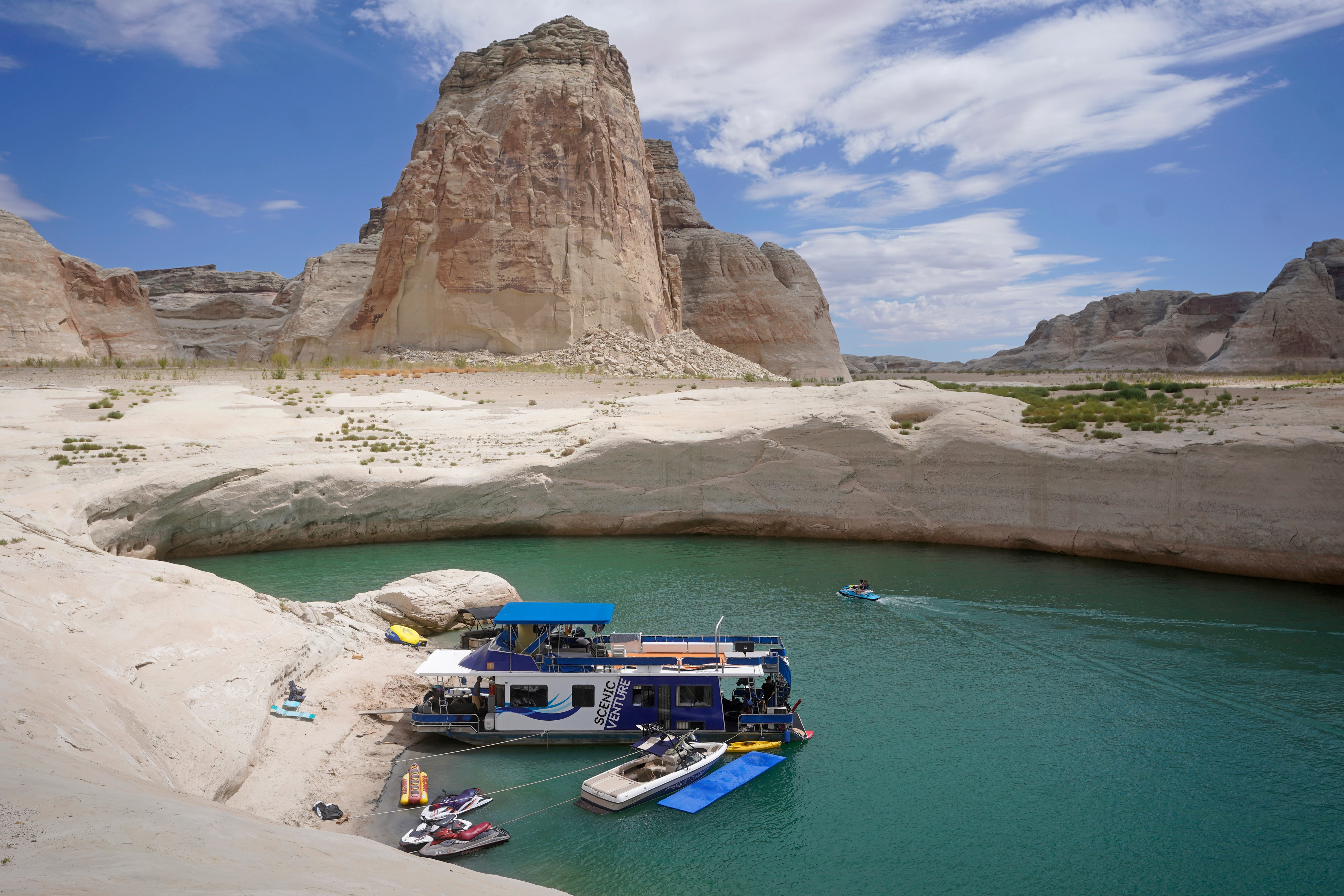Arizona and California have been transformed by climate change. Now we face some tough decisions
‘I just tell my LA friends: Preserve water like it’s your last vial of Botox’


Your support helps us to tell the story
From reproductive rights to climate change to Big Tech, The Independent is on the ground when the story is developing. Whether it's investigating the financials of Elon Musk's pro-Trump PAC or producing our latest documentary, 'The A Word', which shines a light on the American women fighting for reproductive rights, we know how important it is to parse out the facts from the messaging.
At such a critical moment in US history, we need reporters on the ground. Your donation allows us to keep sending journalists to speak to both sides of the story.
The Independent is trusted by Americans across the entire political spectrum. And unlike many other quality news outlets, we choose not to lock Americans out of our reporting and analysis with paywalls. We believe quality journalism should be available to everyone, paid for by those who can afford it.
Your support makes all the difference.Phoenix, Arizona — which boasts summer temperatures of 120 degrees Fahrenheit (49 degrees Celsius) — is the fastest-growing big city in the country over the past decade, according to the Census Bureau. This, despite the fact that Arizona is facing serious consequences from climate change and predictions of increasing heat deaths, decreasing air quality, and more frequent water shortages.
Indeed, serious water shortages are already here. Arizona is the first state to experience restrictions because of the drought-fueled decline in the Colorado River. The state has been conserving its water supplies for over 40 years, and its long-range plan for water conservation began in 1980 with the enactment of the Groundwater Management Act. The act is devoted to progressively reducing the amount of water used by major consumers in the“Active Management Areas,” which include the metro regions where 80 percent of the population lives.
“Our focus today is on the condition of the Colorado River system, primarily the rapidly dropping surface levels at the system’s two biggest reservoirs, Lake Powell and Lake Mead,” said Tom Buschatzke, director of the Arizona Department of Water Resources. “Both are at less than a third of capacity and projections going forward are not encouraging.”
While some people are flocking to the state, others have left in search of cooler temperatures.
Dr. Chad Arthur, an Arizona native and orthodontist, upped sticks recently to El Segundo, California. He and his family now live by the ocean and have no plans to return to Arizona. “Ten years ago, my wife and I decided to leave the economic comforts, lesser governmental regulations, lower cost of living and easier lifestyle Arizona affords and head to California,” he told me, adding that his family was “in search of a year-round rather than seasonal outdoor lifestyle with ideal temperatures and sunshine and an ocean breeze.” At the moment, Arizonans spend long weeks trapped indoors because of the oppressive heat. “We decided the planet is only heating up and while life is short, we want to take advantage of our youth and head for the coast.”
However, California is hardly immune from the sort of environmental concerns that have hit Arizona hard already. Both states are facing water shortages and starting June 1, southern Californians will face unprecedented restrictions because of it. Residents will be expected to limit their water use to 80 gallons per person per day, cutting normal usage by about 35 percent. In particular, they have been told to limit water usage outside — like watering lawns and plants — to one day per week. As one official put it, “We can’t afford green lawns.”
However, Michael Shellenberger, author of Apocalypse Never as well as president of the nonprofit Environmental Progress and an Independent candidate for governor of California, has an entirely different approach to solving the water problem without restrictions. He explained in a phone interview with me that there is no need for water scarcity. This might sound strange, especially considering that in 2014, Californians voted in to spend $2.7 billion on water storage.
“Governor Gavin Newsom has failed to build a single new water storage project in that time,” Shellenberger said, opining that the governor may be influenced by the views of “pro-scarcity environmentalists who fear that abundant water will draw more people to California.” Shellenberger points to one example of Israel building so many desalination facilities that it is now replenishing the Sea of Galilee. “Just nine desalination facilities the size of the Carlsbad Desalination Plant near San Diego would be enough to offset the 2022 loss of water from the Colorado River. If California did this, it would have plenty of water to export to neighboring states like Arizona.” It’s an ambitious goal, no doubt with a high cost. But Shellenberger is clear that he thinks it would be worth it.
Los Angeles resident and comedian Shawn Pelofsky says she’s noticed the effects of drought and water shortages already. “On a recent trip to Big Bear, I saw lakes drying up, wildlife suffering from the heat, and brown patches of earth,” she says. “We need to conserve our natural resources. Take little steps, start by turning off the running water when you brush your teeth… I just tell my LA friends, ‘Preserve water like it is your last vial of Botox’.”
Clint Smith, an Independent running for Congress in Arizona’s 5th District, also has some creative solutions to solve the drought. He explained in a phone interview that there are many aspects to the water crisis, and we need to address them all. “Climate change is real. There are far too many people still denying it, even as we are witnessing water levels at Lake Mead at historic lows. And we are approaching a mega-drought,” he says. “While nearly the entire southwest is facing water shortages, other parts of the country have an abundance.” For Clint, the answer lies with technology — making smart use of the technological capabilities we already have, rather than building something new. “The technology exists to move that water – and we should be exploring all options while we also take steps to increase water efficiency. “
Do Arizona residents have time to come up with long-term solutions such as building water pipelines and water storage plants? And with the new construction across Maricopa county and the endless golf courses across the Valley of the Sun — all of which require water — will Arizona run out of this precious resource?
Buschatzke, the director of the Arizona Department of Water Resources, doesn’t think so. While he believes the challenges on the Colorado River system are serious, the fact that Arizona’s communities have diverse water portfolios other than the Colorado River that include surface water supplies and stored groundwater will help.
“We need to come to terms with the expectation that our hotter, drier future in the southwest is going to mean less water from the Colorado River system. We have to adjust to that,” he says.
As someone who grew up in Arizona and lives here now, I’ve seen the weather patterns change. Summers are hotter and drier, exacerbated by an abundance of concrete with new building projects year after year. Even my trees flower and produce fruit at different times of the year than in the past these days — the fig tree produces fruit in December; the citrus trees start flowering in January rather than March. The climate is definitely changing and one does not need to be a scientist to see the effects in their own gardens.
Arizona used to be the place people moved to for clean air when they had asthma and allergies. Now there are regular air quality warnings. If climate change and the water issues are not addressed, in the next hundred years, there’s reason to believe Arizona won’t be habitable at all.